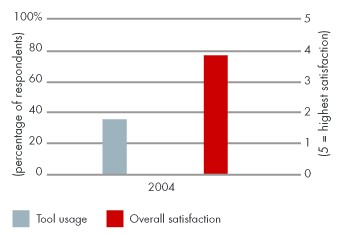价格优化模型 发表评论(0) 编辑词条
Description编辑本段回目录
| 25种最流行的管理工具 | |||||||||||||||||||||||||
|---|---|---|---|---|---|---|---|---|---|---|---|---|---|---|---|---|---|---|---|---|---|---|---|---|---|
| |||||||||||||||||||||||||
| [编辑] |
Price Optimization Models are mathematical programs that calculate price elasticities, or how demand varies at different price levels, then combine that data with information on costs and inventory levels to recommend prices that will improve profits. Price Optimization Models simulate how customers will respond to price changes, supplementing managers’ instincts with data-driven scenarios. The insights help to forecast demand, develop pricing and promotion strategies, control inventory levels, and improve customer satisfaction.
Methodology编辑本段回目录
To implement Price Optimization Models, practitioners should:
- Select the preferred optimization model, determine the desired outputs and understand the required inputs;
- Collect historical data—including product volumes, the company’s prices and promotions, competitors’ prices, economic conditions, product availability, and seasonal conditions as well as fixed and variable cost details;
- Clarify the business’s value proposition and set strategic rules to guide the modeling process;
- Load, run and revise the model;
- Establish decision processes that incorporate modeling results without alienating key decision makers;
- Monitor results and upgrade data input to continuously improve modeling accuracy.
Common Uses编辑本段回目录
Price Optimization Models are used to determine initial pricing, promotional pricing and markdown (or discount) pricing.
- Initial price optimization is well-suited to businesses that have a fairly stable base of products with long life cycles, such as grocery, chain drug, and office-supply stores, and manufacturers of commodities like packaging and tools.
- Promotional price optimization helps businesses set temporary prices to spur sales of items with long life cycles, such as newly introduced products, products bundled together in special promotions and loss leaders.
- Markdown optimization is well-suited to businesses that sell short life-cycle products that are subject to fashion trends and seasonality. Examples include service businesses like airlines and hotels, and certain kinds of specialty retailers, such as apparel retailers, mass merchants and big-box stores.
参考文献编辑本段回目录
【1】Chen, Yuxin, James D. Hess, Ronald T. Wilcox and Z. John Zhang. “Leveraging Customer-Level Information for Product-Level Decisions.” University of Virginia, December 2001.
【2】Fishman, Charles. “Which Price Is Right?” Fast Company. March 2003, pp. 92-101.
【3】Huang, Kosin. “Investing in Price Optimization, Execution, and Analysis Solutions.” CIO analyst report, April 9, 2004.
【4】Kinni, Theodore. “Setting the Right Price at the Right Time.” Harvard Management Update, December 2003, pp. 4-6.
【5】Langdoc, Scott. “Retailers Are Validating the Need for Lifecycle Retail Price Management Technology.” AMR Research analyst report, September 29, 2004.
【6】Parks, Liz. “Price-Optimization Tools: Generating a New Wave of Profits.” Drug Store News, October 7, 2002, p. 1.
【7】Rusmevichientong, Paat, Benjamin Van Roy and Peter W. Glynn. “A Non-Parametric Approach to Multi-Product Pricing.” Stanford Knowledgebase , January 2003.
附件列表
→如果您认为本词条还有待完善,请 编辑词条
词条内容仅供参考,如果您需要解决具体问题
(尤其在法律、医学等领域),建议您咨询相关领域专业人士。
0
标签: 价格优化模型 25种全球最流行的管理工具 Commodities Customer satisfaction Customers Demand Forecast Inventory Promotional pricing Value proposition 业务流程再造

同义词: 暂无同义词
关于本词条的评论 (共0条)发表评论>>
 编辑实验
创建词条
编辑实验
创建词条

